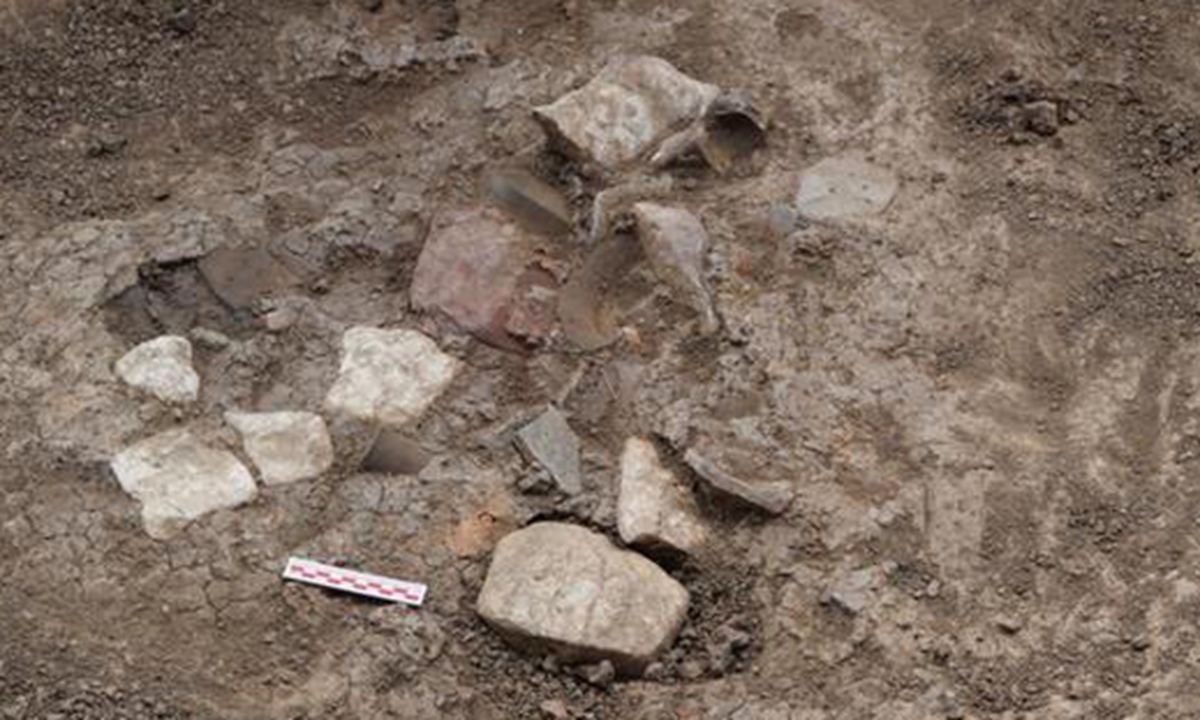
Photo: Screenshot from website
Located in Jinan,
mk East China's Shandong Province, the archaeological site known as the Tianzhuang Ruins has recently unearthed artifacts and architectural remains that reveal the area's thriving stone handicraft industry during the Eastern Zhou Dynasty (770BC-256BC).
At the northeastern part of the site, the architectural remains of an ancient workshop were discovered. He Li, head of the archaeological project, told the Global Times that the workshop was "mainly used for producing stone wares" during the Warring States Period (475BC-221BC), a later stage of the Eastern Zhou Dynasty.
The configuration of the ancient workshop can be clearly seen from the more than 200 remains found at the site such as ash pits and ditches, wells, kilns and hearths.
One pit discovered at the site was believed to have once been used for "storing sand for grinding and polishing stone wares," He told the Global Times.
Other than the sand storage pit, another ditch was found containing a large amount of limestone and byproducts from stone tool making, indicating it was a ditch used for recycling discarded stone tool debris. Around the site's wells, ash pits with high sand content were also discovered to have been water pits used for stone tool processing.
"These remains had different purposes and their clear configurations indicate the maturity of stone processing in ancient times. They show ancient people had developed a production line for stone handicrafts," archaeologist Lu Zhaojun, who specializes in ancient stone, bronze and pottery wares, told the Global Times.
More than 150 well-preserved artifacts, predominantly stone wares, have also been unearthed at the site, including tools such as stone axes and adzes.
Taking all these unearthed artifacts into consideration, He told the Global Times that the area's stoneware making tradition not only had an impact locally but also showed signs of "outward dissemination."
"At the Yingcheng archaeological site, 4.5 kilometers northwest of our excavation area, we discovered stone tools from the same period and in the same style as those at the Tianzhuang site," said He. He also noted that besides stone products, the Tianzhuang site is also rich in pottery and iron wares.
The discovered pottery includes items such as jars, basins and zeng, a type of ancient steamer. They were mainly utensils for daily dining and cooking, but were aesthetically designed, such as a jar with rope patterns.
A smaller number of tree-patterned pottery eave tiles, also known as wadang, have also been unearthed at the Tianzhuang site. These patterns appear extremely similar to those seen on relics discovered at the ancient city site of the Qi State in the Linzi district of Zibo, Shandong Province.
"These similar designs lead us to believe that the Tianzhuang site exhibits distinctive characteristics of Qi culture," said He. Qi culture was related to the Qi Kingdom, which was one of the most powerful states during the Spring and Autumn (770BC-476 BC) and Warring States periods in Chinese history.
"This marks the first time that relics with features of Qi culture have been found at the Tianzhuang site and its surrounded area. It will greatly help our future research into how the Qi lifestyle, economy and civilization developed in this area," He emphasized.
Including the Tianzhuang site, a total of 10 archaeological ruins scattered around Shandong Province have been selected as the final candidates for the provincial-level "2024 Top Ten archaeological discoveries list."
"For our next step, we plan to expand our research zones, and investigate around the Yingcheng archaeological site," said He. He also emphasized that comparative researchers will likely bring exciting findings.

